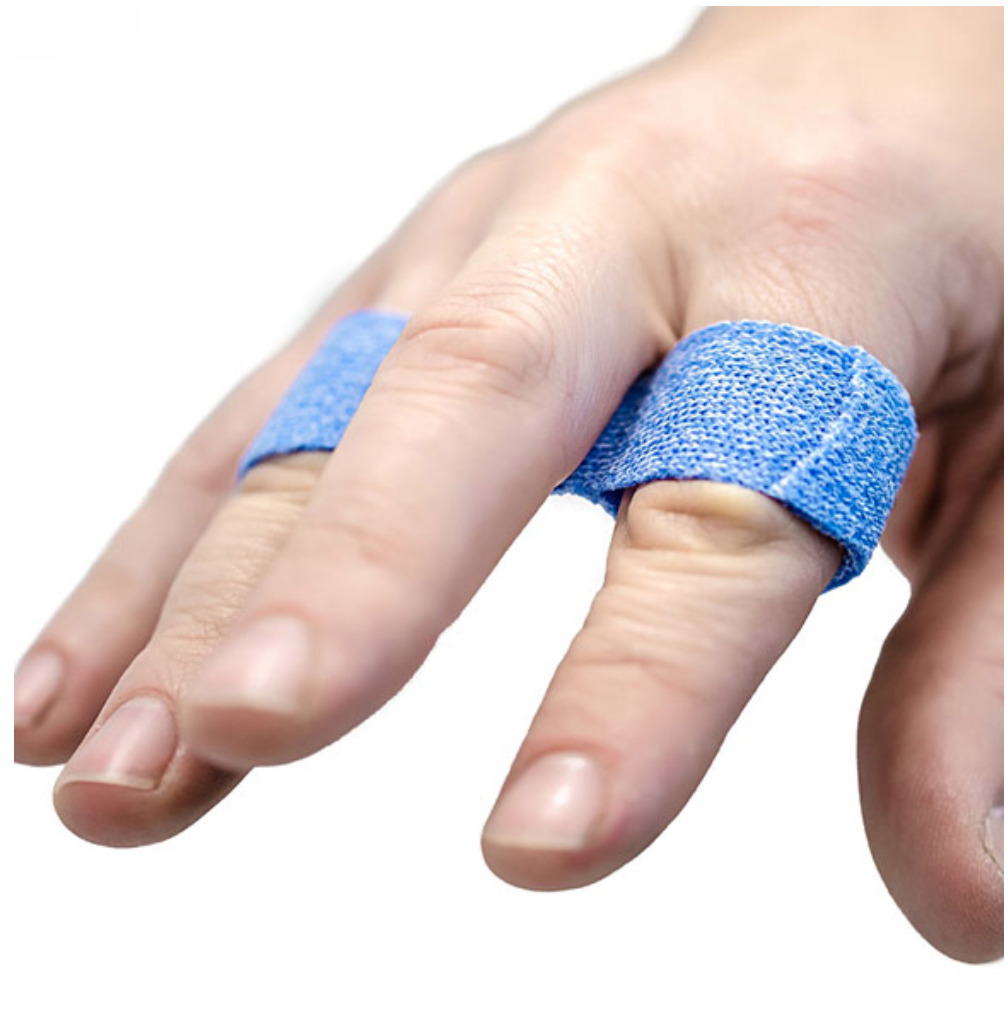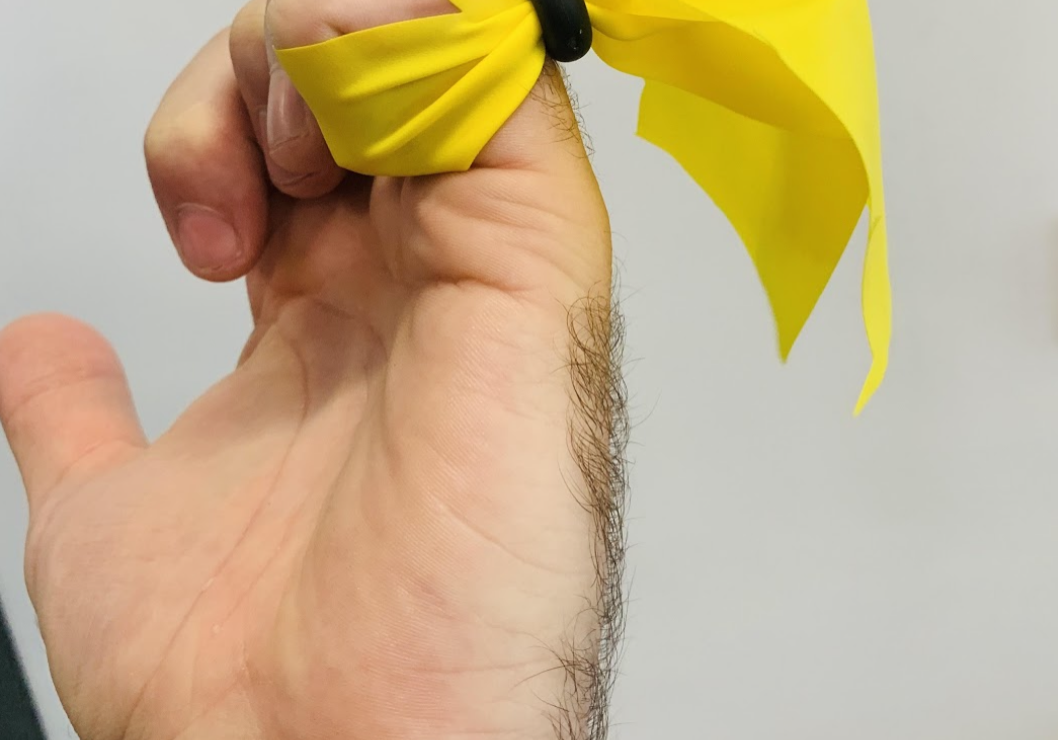A randomized clinical trial comparing early active motion programs: Earlier hand function, TAM, and orthotic satisfaction with a relative motion extension program for zones V and VI extensor tendon repairs
Filed under Reviews
By Brittany Day
Collocott SJ, Kelly E, Foster M, Myhr H, Wang A, Ellis RF. A randomized clinical trial comparing early active motion programs: Earlier hand function, TAM, and orthotic satisfaction with a relative motion extension program for zones V and VI extensor tendon repairs. Journal of Hand Therapy. 2019. doi:10.1016/j.jht.2018.10.003
The Skinny-
This is a level 1B, single-center prospective randomized clinical trial (RCT) with parallel groups (N=42). Objectives were twofold: To compare functional outcomes of participants managed with a controlled active motion (CAM) program using a wrist hand finger orthosis (WHFO), and a relative motion extension (RME) program, using a finger orthosis (FO) after zones V and VI extensor tendon repairs; Investigate whether the RME participants demonstrated an earlier recovery of functional use and RTW than the CAM participants based on the 3 domains of function as defined by the ICF, disability, and health model (body functions, activities, and participation).
Using a relative motion extension protocol and relative motion splint for no more than two digits with Zone V and Zone VI injuries without multi-tissue involvement results in earlier functional movement, total active motion (TAM), and orthosis satisfaction status post tendon repair compared to the controlled active motion protocol. Although there was no significant difference in the amount of time needed to return to work (RTW), this may result in a quicker return to normal daily activities for the individual involved. Both protocols are safe and viable options for treatment. This strong study allows for increased confidence in applying results into practice as it is a detailed, well designed randomized control trial.
In The Weeds-
Participants were recruited from a hospital in New Zealand from February 2015-2016. Participants were approached by their treating therapist if they met the inclusion criteria: at least 16 y/o, primary repairs to extensor tendon lacerations of 50%-100% of 1 to 2 digits in zones V and/or VI and attended their first-hand therapy appointment by 7 days post-tendon repair. Exclusion criteria included those under 16 y/o, multi-tissue injuries, or more than two extensor tendon injuries in zone V and/or VI. Participants then chose a sealed envelope that assigned them to a group using block randomization. These envelopes utilized block randomization with equal numbers in each group.
The study compared two intervention groups following a protocol which discusses the orthoses donned, exercises provided, therapy goals, work limitations, and advice given to the participants provided in 4 stages of treatment (Stage I 1-4 weeks, Stage II 4-6 weeks, Stage III 6-8 weeks, and stage IV 8 weeks). The main difference between the treatment protocols was the relative motion orthosis used. The CAM group is a conservative approach to the treatment of zone V and VI extensor tendon repairs. The orthosis provided to the CAM group is a WHFO with PIPs free and an additional component to block motion at IP joints at night. This treatment group was assigned regular home exercise program (HEP), donned a more restrictive orthosis, and was constrained to light-duty work (4.5kg) until after week 8. The RME group is a treatment approach that allows unrestricted motion of the wrist and IPs. The MC joint of the affected finger(s) is held in 15-20 degrees extension relative to the uninvolved digits with a FO. At night the participants are placed in a resting hand WHFO including the IPs. This treatment group was not assigned a HEP unless ROM difficulties arose. Participants had a less restrictive protocol that allowed movement of the wrist and digits within the confines of the FO, and return to a moderate duty (20kg) before 8 weeks.

Bringing it Home-
The mean differences between the CAM and RME groups at 4 and 8 weeks were assessed using the analysis of covariates, adjusted by covariates (ANCOVA), appropriate for nominal data. A Chi-Square test of association or the Fisher exact test was used for the frequency distribution of complications and categorical outcomes within the treatment groups. The RME group demonstrated better results at 4 weeks for the SHFT score, QuickDASH score, and TAM. Higher satisfaction rates were reported in the RME group. Quantile regression analysis was used to determine the differences in the number of days to RTW. Days to RTW were similar between groups. Though not statistically significant, but clinically relevant, the CAM group RTW 2 days sooner on average. No tendon ruptures were reported.
This prospective RCT compared RME and CAM with 2 different orthoses. Though both treatment protocols are safe with no significant difference in time taken to RTW, the RME group rated higher in orthosis satisfaction, TAM, and earlier functional hand use.
Rating (0-5)- 4
The limitations include the lack of generalizability of this study. These treatment protocols are limited to Zone V and VI extensor tendon injuries in two or fewer digits without accompanying multi-tissue injuries. It was impossible to blind the participants or treating therapists, however, bias was reduced by blinding the primary investigator who measured the primary outcome. A bias not discussed by the authors may include an intervention bias, as all participants were treated in the same facility during a 13-month period. This could cause contamination bias as there is a risk of possible exposure to the opposing treatment groups. The adherence to the protocols could not be completely controlled as some of the participants reported driving and not strictly following work restrictions. Lastly, the power of the study was calculated to be 30%, however, the standard is 20%. The participant power number may have been different if calculated with a 20% dropout rate in mind.
More To Read
Prevention and Management of Upper Extremity injuries in Modern Mass Production
Injuries and Upper Extremty Pitts, G., Custer, M., Foister, R. D., & Uhl, T. (2021). The hand therapist’s role in the preventionand management of upper extremity injuries in the modern mass production industrial setting.Journal of Hand Therapy, 34(2), 237–249. https://doi.org/10.1016/j.jht.2021.04.019 By: Kaylen Kallander The Skinny: This study included four case studies to determine the impact…
Read MoreThe Importance of Purposeful Activities Following Surgical Repair of a Distal RadiusFracture
By: Kelsey Melton Collis, J. M., Mayland, E. C., Wright-St Clair, V., Rashid, U., Kayes, N., & Signal, N.(2022). An evaluation of wrist and forearm movement during purposeful activities andrange of movement exercises after surgical repair of a distal radius fracture: A randomizedcrossover study. Journal of Hand Therapy. https://doi.org/10.1016/j.jht.2022.07.009 The Skinny: This randomized crossover study…
Read MoreTop 6 treatments for Pinky Fractures
Clients who have experienced a fracture of the finger or hand often find it difficult to participate in meaningful occupations. Everyday tasks from grasping items, cutting food, taking lids off containers, turning keys, and many others can be very painful. Pinky fracture is particularly challenging and painful. This is typical because the largest contributor to…
Read MoreSign-up to Get Updates Straight to Your Inbox!
Sign up with us and we will send you regular blog posts on everything hand therapy, notices every time we upload new videos and tutorials, along with handout, protocols, and other useful information.





